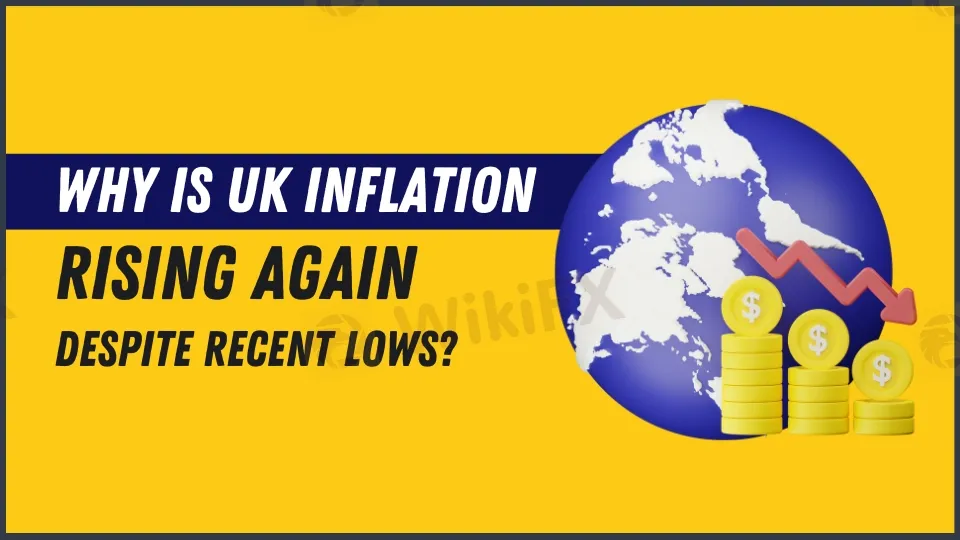简体中文
繁體中文
English
Pусский
日本語
ภาษาไทย
Tiếng Việt
Bahasa Indonesia
Español
हिन्दी
Filippiiniläinen
Français
Deutsch
Português
Türkçe
한국어
العربية
Why Is UK Inflation Rising Again Despite Recent Lows?
Abstract:October inflation rises to 2.3%, driven by energy costs. Renters face 8% annual hikes, while house price inflation climbs. Interest rates stay elevated.

The most recent economic figures portray a varied but tough picture for the country's consumers. In October, inflation, a major indicator of living costs, unexpectedly increased to 2.3%, above experts' predictions. While this rate is still much lower than the double-digit highs of previous years, the minor increase indicates that family finances are under continued strain. This move calls into doubt the larger economic recovery and millions of people's financial security.
Inflation Driven by Energy Costs
The major cause of this surge is an increase in home service expenses, with energy prices playing a considerable influence. Although energy prices had steadied earlier this year, the October spike shows that instability has returned. Many families already stressed finances are strained by these rising prices, especially as winter approaches and heating demands rise.
Trends in the Housing Market: Home Prices vs. Rent
House price inflation, another important indicator of economic health, increased little to slightly over 3%. This is a turnaround from earlier this year when prices temporarily fell into negative territory. The real impact is on tenants, who are seeing rental expenses rise by more than 8% every year.

This practice is causing an increasing hardship on renters. Unlike homeowners, who may realize long-term returns on their assets, renters confront immediate out-of-pocket expenditures with no respite in sight. The disparity between home prices and rental inflation highlights the issues that renters confront in an already costly housing market.
Interest Rates: Slowly Declining on the Horizon
The Bank of England, in charge of regulating inflation, has left interest rates at 4.75%. Earlier predictions projected that interest rates might fall to 3.5% by mid-2024. However, recent economic statistics and budgetary actions have caused expectations to alter. Following the government's recent budget declaration, interest rates are expected to stay over 4% for most of next year.
Higher interest rates are intended to reduce inflation but also raise borrowing costs for consumers and companies. Mortgage holders and those with variable-rate loans continue to face the brunt of these rate spikes, disrupting many families' financial plans.
Impacts of Government Borrowing on the Budget
The cost of borrowing by the government is another factor impacting the economic outlook. The UK's borrowing costs increased significantly after the latest budget. While the rise was less significant than the one after Liz Truss' 2022 mini-budget, it nevertheless raises worries about fiscal stability and market confidence. The increased borrowing rates restrict the government's ability to implement further steps to alleviate family financial concerns.
Last Thoughts
Inflation and rental expenses are rising, while many people's wages are stagnating, making the next months difficult. While inflation has decreased from recent highs, it remains a severe problem, especially for renters and low-income families.
Policymakers must strike a difficult balance: reduce inflation without suffocating economic development or laying undue costs on already suffering consumers. With interest rates predicted to stay high and energy prices fluctuating, the cost-of-living dilemma is likely to continue to be a major worry far beyond 2024.

Disclaimer:
The views in this article only represent the author's personal views, and do not constitute investment advice on this platform. This platform does not guarantee the accuracy, completeness and timeliness of the information in the article, and will not be liable for any loss caused by the use of or reliance on the information in the article.
Read more

DMM Bitcoin to Cease Operations Amid Asset Transfer to SBI VC Trade
DMM Bitcoin, a prominent cryptocurrency exchange in Japan and a subsidiary of the DMM.com Group, has announced plans to shut down its operations.

Apple Pay, Google Pay Eyeing Launch in the Philippines
Apple Pay and Google Pay plan to enter the Philippine market. To do so, they must first register with the BSP as operators of payment systems.

Philippine Peso Could Hit P60 in Early 2025, DBS Says
DBS forecasts the Philippine peso to hit P60 per dollar in early 2025, with factors like US monetary policy and Trump’s trade tariffs affecting the outlook.

Coinbase Integrates Apple Pay for Easy Crypto Onramping
Coinbase adds Apple Pay to its Onramp tool, enabling fast and easy fiat-to-crypto purchases for 60 million U.S. Apple Pay users. Learn more!
WikiFX Broker
Latest News
Ontario launches major US ad campaign amid Trump's tariff threat
Capital.com Collaborated with Amazon in the UAE
ActivTrades Gains Regulatory License in Mauritius
Ripple’s RLUSD Stablecoin Expected to Launch in NY by Dec. 4
Apple Pay, Google Pay Eyeing Launch in the Philippines
easyMarkets Kicks Off the Start of Its Trade with the Champions Competition
Oil Prices Mixed Amid Accusations of Ceasefire Violations Between Israel and Hezbollah
India's Rs 6,000 Crore Ponzi scam
Philippines Warns Public of Get-Rich-Quick Scams This Christmas
Know Ins & Outs of Prop Trading Firms
Currency Calculator


